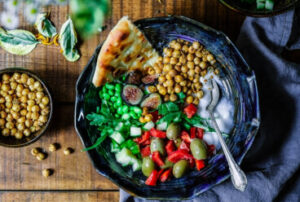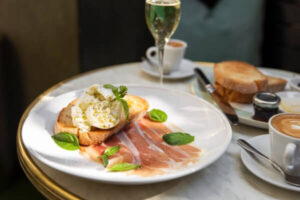First, let’s talk about the trademarks that are often used. They are also called trademarks, woven marks and woven marks. The raw materials are 100% POLYESTER chemical fibers. It is mainly divided into two types
Selvage and trimming
The trimming trademark, as the name implies, is used on special high-speed machines (at present, the machines used in the factory include the Swiss Mueller machine, the German Warburg machine, the Italian Leibao machine, and some domestic machines). On this machine, it is woven like a piece of cloth, and then cut into strips according to the marked width. Because of the heat melting property of polyester, the yarns will stick together when cutting, and will not spread. For this reason, the appearance and feel will be affected. The ultrasonic cutting can be used to improve, but the unit price will increase. Generally, customers will accept the electric wire cutting because the cost is relatively low. In addition, the trademarks cut from the machine are packed in strips, but they are sewn on clothes one by one. Therefore, there will be post processes for trademarks, which can be divided into cutting, shaping and sewing. Because the maximum width of this machine is 20.8cm, that is to say, the machine can weave the label of this width, and can also process the cut edge cloth labels of various shapes. According to the process classification, it can be divided into two categories: plane label and satin label.
Plane sign
The cloth sign is like a cloth structure, which is simply interwoven up and down by one warp and one weft. It is called a simple plane sign. Generally speaking, warp yarns are fixed, either black or white, so they can be divided into black flat and white flat. Light background color is generally white flat, and dark background color is generally black flat. The pattern and color of the cloth label are mainly expressed by the weft, and the color expressed will be different from the effect of the warp crossing. Because the types of weft yarn are limited for general machines, the colors that can be expressed are limited, generally within 8 types. It can be seen from the above that the price is composed of the following factors: the width of the trademark (i.e. the amount of warp yarn used); The length of the trademark, and the length of each color along the warp direction (total color yarn length). In order to express details and colors more richly, double the weft of the trademark, which is called double-sided label. If a certain color sample needs to be more three-dimensional, add a heavy yarn, which is called heavy shuttle. In addition to washing and sizing, most of them use flat double-sided labels.
Trademarks are all designed by yarn, which must be different from the original graphic design, so it is impossible to make large goods without small samples. Selvage label: when the required trademark is woven according to the width at one time, it is called selvage label. This process avoids many disadvantages of trimming, but the output is low. There are also flat/satin, which is characterized by soft and pretty feel. It is more suitable for use in high-end clothing products, such as fashion, suits, etc., which are used most by Japanese manufacturers who are very quality conscious, and machines are also made by Japanese manufacturers. The selvage mark is generally used as the satin mark, but the satin background is difficult to express, and the hot pressing/dyeing process is often used to solve this problem. A machine is usually relatively fixed in terms of whether it is flat or satin. Generally, the width of cut edge satin shall not exceed 10.8cm, and that of selvedge shall not exceed 5.0cm. The machine for selvage generally has wooden shuttle machine, and the color can not exceed four; There is also a crochet machine, which can also weave the quality of various processes. It can even add transparent polyester yarn to the warp, which is called fish silk crochet machine.
In addition to width, total length of colors and process, the cost of cloth label also includes the variety of yarn used. JB series yarn is commonly used internationally.
Silk screen
The offset printing described above is more suitable for high quality and large batch paper printing. Silk screen printing is a very flexible processing technology.
Principle: basically like wax paper mimeography, but the version is different. There are special screen printing plates. It is printed directly. Ink is thick.
Features: low cost plate making, basically suitable for any medium printing: paper, plastic, pvc materials, cloth, glass, etc. For example, a small batch of simple paper hangtag processing has obvious shortcomings. It is not very accurate and can not be used for four-color overprint. Even if it can, the dot is also coarse. Of course, machine printing is better than manual printing. The accessories commonly used in silk screen processing are: plastic tag, various leather tags, various pvc tags, ribbon, special printing tags, etc. The combination of silk screen printing and offset printing can also make a special effect on the clothing tag.
Silk screen voltage indicator
We usually see a variety of PVC markers, stereoscopic markers, reflective markers, inflatable markers, etc. The process is to first determine the materials (materials are a very important part of the cost), then print the materials according to the required size and color, and then take them to the high-frequency voltage machine, use the prepared mold to press the required stereoscopic feeling and the required 10% or more of the materials together. The quality of products is closely related to the design, especially the materials used.
Adhesive seal – drop plastic label, PVC label, leather label
No matter what you call it, it has its own reason. The raw material is PVC, and there is also the environment-friendly material Silicone. It’s a bit like making moon cakes. First, make the mold, then fill in all kinds of liquid PVC that have been adjusted in color, send them to the oven, fully react in the high temperature, and then take them out to cool and fix them. Basically, bake them once with one color. Finally, trim the edges. It can be seen that the more complex the pattern, the higher the cost, the more colors, the larger the size, the more difficult to make, and the higher the cost. Ordinary materials are very cheap, except for environment-friendly materials. The surface of the pattern is a horizontal plane, which is relatively simple and is called plane adhesive seal; If the surface of the pattern is a curved facade, it will become a three-dimensional adhesive seal, which is more difficult and costly. Therefore, the mold opening fee shall be charged according to the apparent difficulty. In addition to ordinary clothing logo, adhesive seals are widely used in small gifts such as key rings, mobile phone belts and mobile phone stands. The production of adhesive seals is labor-intensive, and the production speed is largely limited to the size of the mold used. Mold is a large proportion of production. In design, attention shall be paid to that too small details shall not be expressed, generally more than 2mm, and each color block shall have a gap.



